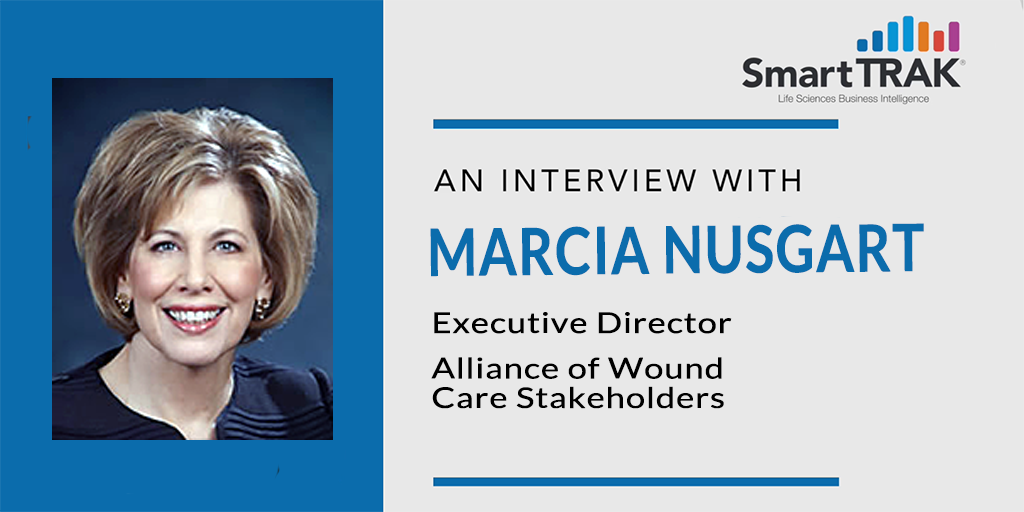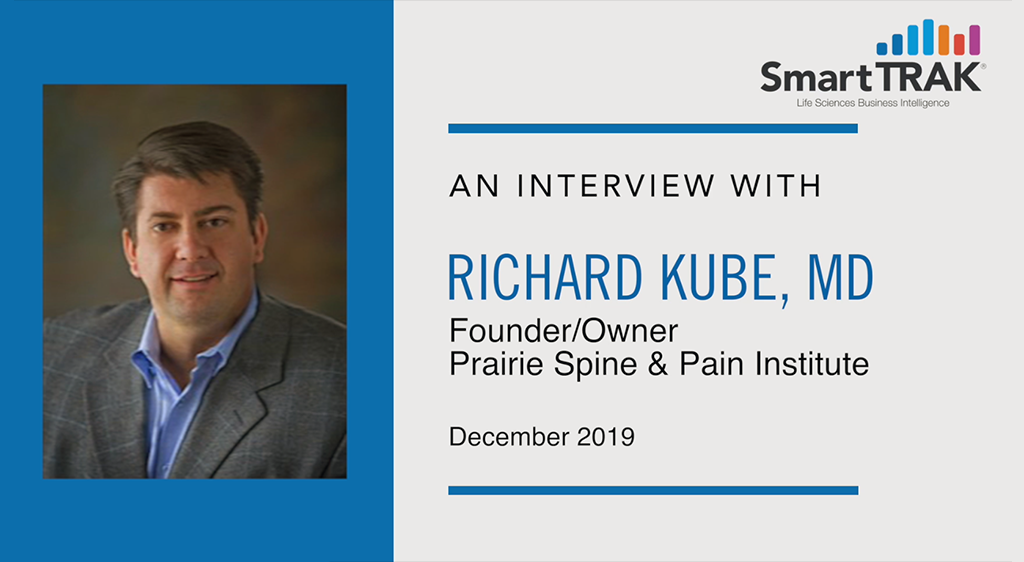 Marcia Nusgart, Executive Director, Alliance of Wound Care Stakeholders, discusses the upcoming Wound Care Evidence Summit and improving payer coverage in an interview with SmartTRAK.
Marcia Nusgart, Executive Director, Alliance of Wound Care Stakeholders, discusses the upcoming Wound Care Evidence Summit and improving payer coverage in an interview with SmartTRAK.
So, what are payers looking for? What and how much clinical evidence do payers need to cover wound care products and procedures? How can manufacturers prepare scientific evidence to meet payer needs, improve coverage and achieve more uniform policies for treating wounds in all healthcare settings? To answer these questions and more, the Alliance of Wound Care Stakeholders is convening payers, regulators, researchers, manufacturers and wound care providers at its upcoming Wound Care Evidence Summit to be held April 1-2, 2020 in Washington, DC.
To find out about the Summit, improving payer coverage and opportunities for industry, SmartTRAK’s Susan Paquette interviewed Marcia Nusgart, Executive Director of the Alliance of Wound Care Stakeholders.
SmartTRAK: What prompted the Alliance to convene this Summit?
Marcia Nusgart: The impetus for creating this conference is that Alliance members—physician specialty societies, clinical associations and manufacturers—are concerned about the increasing coverage restrictions stemming from the challenges and lack of clarity surrounding wound care evidence. They have expressed the need for a comprehensive look at policy issues related to clinical evidence and clinical trial design, with inputs from payers, health care policy experts, researchers, clinical associations and regulators.
In response to this need, we’ve designed a Summit to have all of these stakeholders in one room to tackle issues and build solutions—with a focus on building clarity around how much and what type of clinical evidence payers need to produce a positive coverage decision for wound care products and procedures. The Wound Care Evidence Summit in Washington D.C. on April 1-2, 2020 aims to break down transparency barriers, identify shared concerns and challenges, and importantly, shed some light on evolving coverage requirements.
What’s unique about this Summit versus other conferences in the wound care space?
MN: We are excited to offer attendees the opportunity to hear from and interact with speakers whom they would not otherwise be able to access on their own, such as:
Payer Medical Directors:
- Humana: Dr. Charles Stemple, Senior Medical Director
- Noridian: Dr. Larry Clark, Medical Director,
- US Healthcare/Aetna: Dr. Ray Fabius, Former Medical Director
- Anthem: Dr. Alan Rosenberg, Former Vice President, Medical and Clinical Pharmacy Policy
- Optima Health Plan/Sentara: Dr. Thomas Lundquist, Chief Medical Officer
- Kaiser Permanente: Dr. Antoine Lyonel Carre
Companies who analyze and provide the clinical evidence to private payers for coverage policies:
- Hayes: Michelle Ostrander, PhD, Scientific Director, Evidence Analysis
- MCG Health: Stacey Popko MD, MBA, Managing Editor
Regulators and policy makers:
- AHRQ: Dr. Elise Berliner, Director, Technology Assessment Program
- FDA: Dr. Cynthia Chang, Branch Chief, Plastic and Reconstructive Surgery Devices, Center for Devices and Radiological Health
- FDA: Dr. Isaac Rodriguez-Chavez, Officer, Office of Medical Policy, Clinical Methodologies, Center for Drug Evaluation and Research
- NIH: Dr. Marcel Salive, Medical Officer, Division of Geriatrics & Clinical Gerontology
What is also unique is that the Summit will be dialogue and discussion driven and we are allowing only about 100 participants which will enable for greater participation among the attendees. Only a few slots remain!
What are some “hot topics” that will be addressed?
MN: We will be addressing a broad range of challenges in wound care research and coverage. Particular “hot topics” include:
- Endpoints in clinical trial design
- Real-world evidence and modernization of clinical trials
- Funding of wound care research
Regulatory guidance on these fronts is evolving and at the Summit we will hear directly from FDA and NIH speakers on these specific topics. We need to make sure, however, that evidence that is sufficient for regulators will also be sufficient for payers. The Summit’s payer panels will build clarity around these hot topic issues and include:
- Payer Perspectives on FDA Endpoints and Real-World Evidence Opportunities
- Payer Perspectives on Clinical Trial Design and Possible Solutions
- Payer Perspectives on Coverage, Process Issues and Evidentiary Requirements
- Payer Perspectives on Clinical Practice Guidelines and Current State of Wound Care Research
Expect lively interactive conversation between panelists, speakers and all participant, with a focus on developing action items and collaborative next steps.
Who should attend the conference?
MN: To take full advantage of the access that the Summit offers, we encourage manufacturers, clinical associations and medical societies to send senior staff who can collaborate and build solutions directly with payers, regulators and researchers, such as:
- CEOs
- Chief medical officers
- Directors of research
- Reimbursement, government and regulatory affairs staff
What do you aim to accomplish at the Summit?
MN: We aim to begin productive conversations with medical directors about the type and quantity of clinical data needed to produce a positive coverage decision for wound care products and procedures. We aim to build understanding with the FDA and medical directors on elements of clinical trial design that will help elevate the type of evidence needed for approval by the FDA and for insurance coverage. And finally, we aim to leave with mutual understandings of action items and next steps to address collaboratively so that progress can be made and greater transparency achieved.
See the detailed agenda and roster of speakers featured at the April 1-2, 2020 Wound Care Evidence Summit in Washington, D.C. To keep the meeting participatory and interactive, space is limited.
Register today to grab your seat at the table.
SmartTRAK is the leading source of competitive intelligence used by the top 10 global orthopedic & top 15 wound care companies. If you would like a demo of all SmartTRAK has to offer and how we can help increase proficiency, improve productivity and reduce costs for your company, just click the button below.





